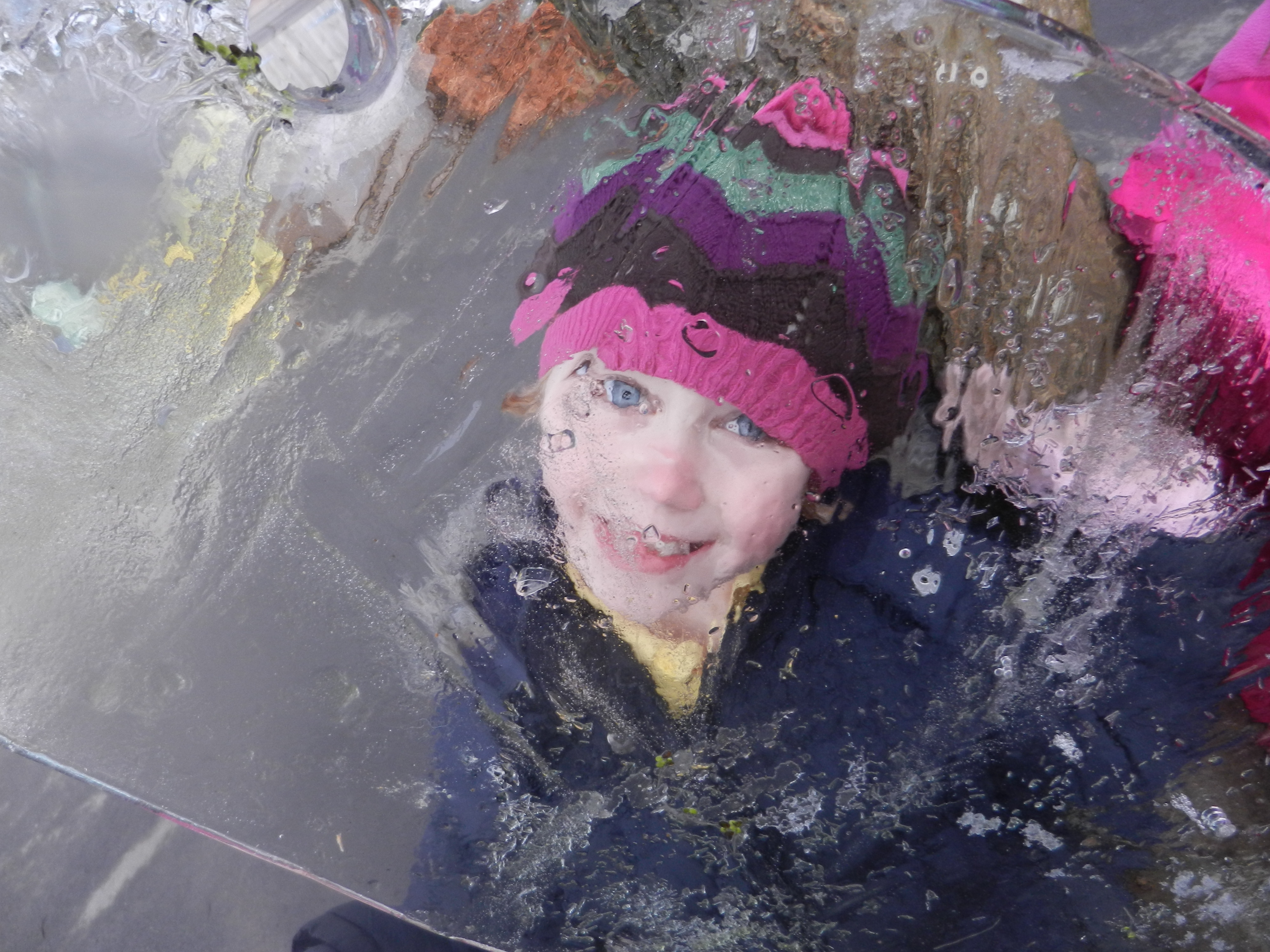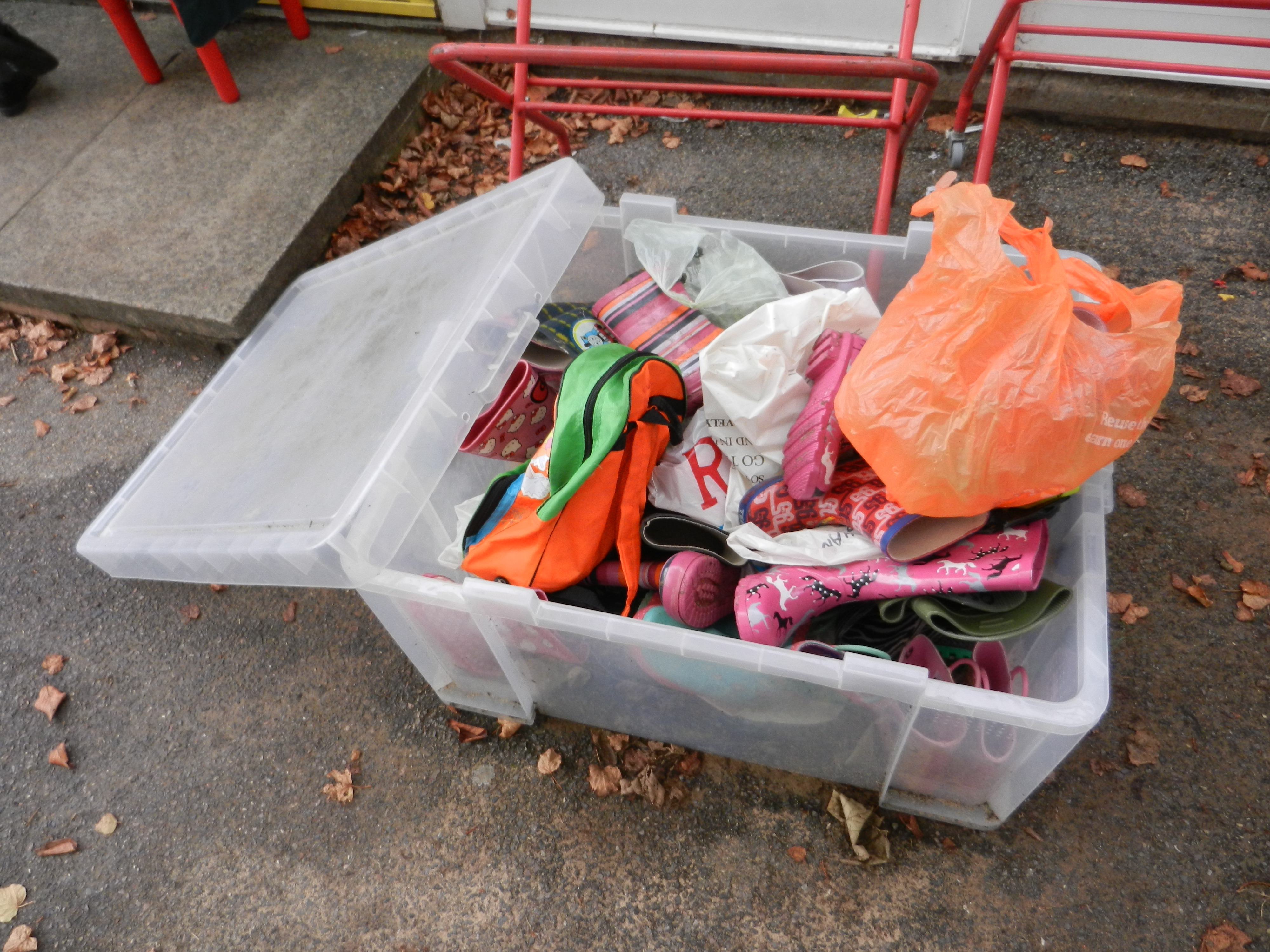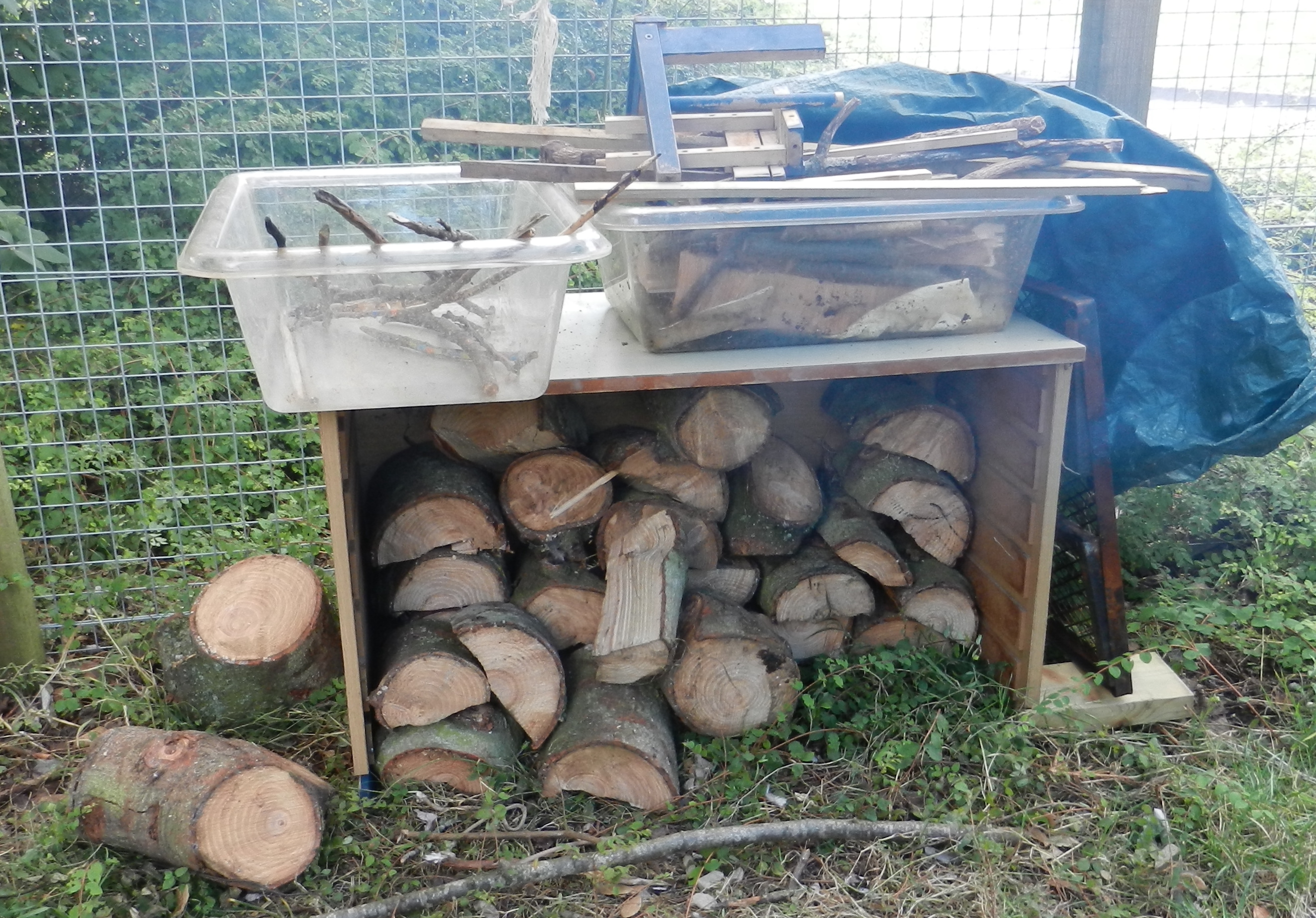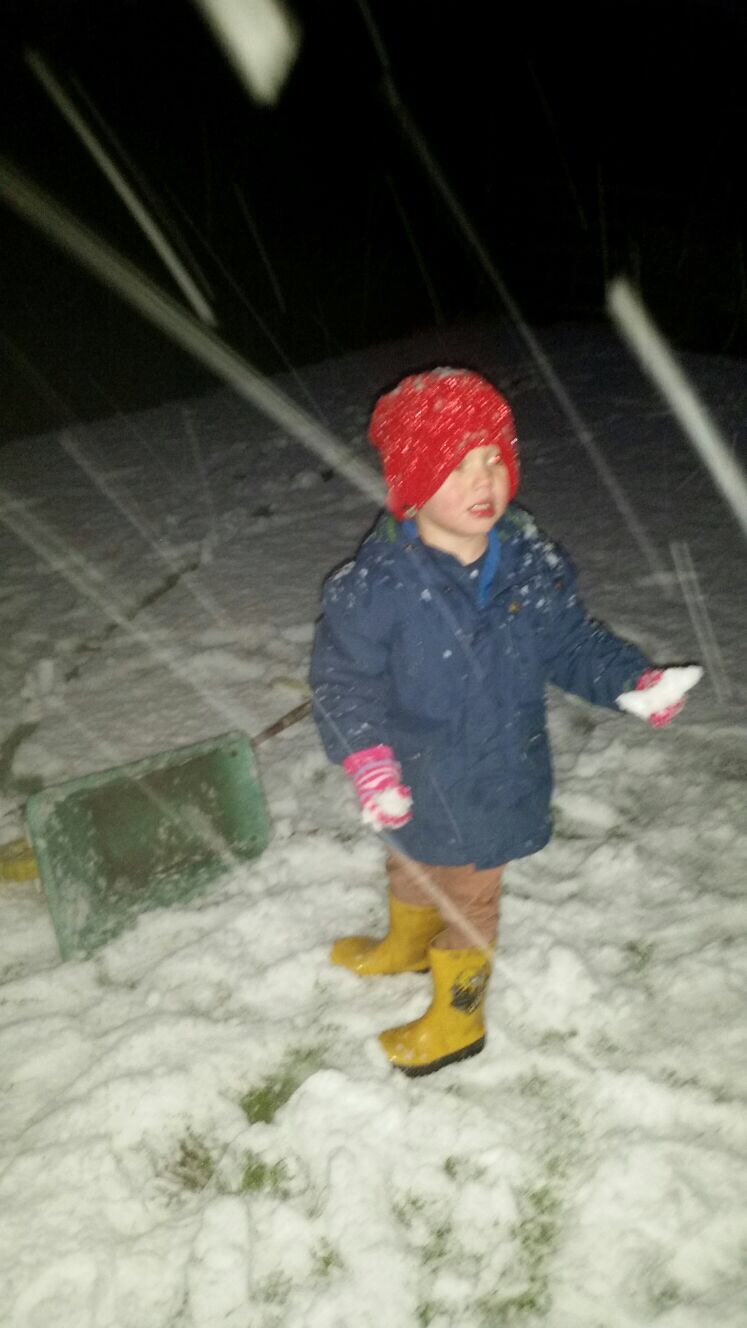
Exploring ice
IN A TIGHT SPOT
 In small spaces you need to make the most of every inch – and that includes the airspace! A network of thin wires, crisscrossing high overhead between walls and fences or other features and secured with small eye hooks, will provide a basis for suspending all kinds of interesting items that children can then experience at their own level. For example:
In small spaces you need to make the most of every inch – and that includes the airspace! A network of thin wires, crisscrossing high overhead between walls and fences or other features and secured with small eye hooks, will provide a basis for suspending all kinds of interesting items that children can then experience at their own level. For example:
- On a night when you expect a heavy frost, lay out shallow trays and dishes filled with water to freeze overnight – plus a few centimetres of water in any tuff trays you have. A long length of string dropped in each tray will freeze too, giving you something to tie the ice up to your ‘washing lines’ with.
- You might try placing all the ice slabs together at different heights, or spacing them around the garden for children to happen upon.
- Add food colouring, small-world objects or natural materials to the trays for an intriguing effect.
Communication and language
 There are so many wonderful wintry words to share during January, plus sound effects to experience and replicate. Do Inuits really have 50 words to describe ‘snow’? Apparently not, but they do have words that describe the various states and conditions of snow; for example, words that describe what we’d call ‘fallen snow’, ‘swirly snow’ or ‘drifting snow’.
There are so many wonderful wintry words to share during January, plus sound effects to experience and replicate. Do Inuits really have 50 words to describe ‘snow’? Apparently not, but they do have words that describe the various states and conditions of snow; for example, words that describe what we’d call ‘fallen snow’, ‘swirly snow’ or ‘drifting snow’.
- On each day in January, go outdoors to not just observe the weather but experience it. Then share words that describe what it looked like, felt like and smelled like. Make simple winter rhymes: Nice ice…slow snow… freezy and breezy… mushy slushy… smelly wellies…
- What sounds describe how our fingers and cheeks feel when they have been outdoors for a while in winter? What does cracking ice sound like?
- Make up your own words to describe the weather each day (as a child, my sister used to describe poor weather as ‘poggy’ and I still love its emphatic sound even now).
Natural learning
 Lots of people donate their Christmas trees to farms and zoos for animal enrichment. This year, ask parents and neighbours if they’ll donate their trees to your setting. Like all large-scale loose parts, more is more – so try to collect as many as can reasonably fit in your garden. Here are a few ideas to get children’s creativity flowing:
Lots of people donate their Christmas trees to farms and zoos for animal enrichment. This year, ask parents and neighbours if they’ll donate their trees to your setting. Like all large-scale loose parts, more is more – so try to collect as many as can reasonably fit in your garden. Here are a few ideas to get children’s creativity flowing:
- Saw some of the trunks into lengths for natural building blocks – make some of them heavy so children have to co-operate to move them.
- Trim the branches from the trunks and leave them in a dry place – they make excellent campfire kindling when bone dry.
- Supply ropes to allow children to haul the trees around the garden.
- Plant a small specimen into the ground to see if you can keep it alive a little longer.
- Snip branches off; trim some of the ‘leaflets’ to make ‘Christmas Tree Quills’ for mark-making.
- Build fortresses, fences, obstacle courses and combine the trees with other features in the garden such as bridges or sandpits.
Winter season
WINTER STEM SPRINGBOARDS
- Use a stick to scrape out ten frames on frosty ground.
- Make tightly packed snowballs to explore number bonds.
- Chalk a large cross on the ground and mark it North, South, East and West; observe how trees and home-made flags are blowing and try to work out which direction the wind is coming from.
- Why doesn’t it snow when the sky is clear?
- What are snow and ice made from? What happens when you hold ice or snow in your hand? What other forms of water can children think of?
- Why do animals hibernate in winter? Why do they come out again in spring?
- Talk about midwinter and midsummer; why are the days warmer in summer than in winter?
Active stories
National storytelling week begins on 30 January 2022. In the meantime, choose a winter story that children can listen to, talk about and reimagine outdoors; for example, the beautifully illustrated and wordless Lines by Suzy Lee, which in the UK is available from secondhand booksellers. The book tells the tale of a skater making marks on the ice, and observing other skaters’ patterns and playfulness. Mrs Clark’s Reading Corner on YouTube offers a short film of the book with evocative sound effects, suitable for showing to children before you all head outdoors to slide and swoosh through the ice in your own garden. Carry out a benefit-risk assessment first.
January top tips
Hit the January sales (especially the pound shops and supermarkets) and create a collection of sparklies and fairy lights to decorate your ‘real’ outdoor trees with next December. Tree dressing is an ancient winter tradition – and the embellishments don’t just have to be natural materials, so light up next winter’s trees with this January’s bargains.
Planning ahead…
- On a HUGE piece of paper, draw 12 squares and label each with a calendar month. In circle time or a small group, ask children to tell you what they know about each month – including natural phenomena such as snow or spring flowers, but also their own birthdays and other celebrations. Over January, add other notes such as jobs that need doing in the garden and things to look out for such as birds’ nests and leaves falling from trees. Try to plan out the whole year so that you have garden-related talking and action points for each month. For more input, visit the RHS website for garden ideas and check out last year’s Outdoor Calendar in Nursery World, as I included maintenance suggestions for each month.
- Ask parents to donate wet-weather gear that their children have grown out of in order to work towards ensuring every child can play outdoors every day, whatever the weather. Learning through Landscapes, the UK’s school grounds charity, has a campaign to end clothing poverty: @LtL_News, www.ltl.org.uk.
- Start collecting colourful materials to make flags and banners to celebrate an outdoor Lunar New Year on Tuesday, 1 February.
Physical development
BALANCE
 Helping children learn how to negotiate tricky terrain is one of the most important jobs we do outdoors, and the icy days of winter should be embraced for this purpose:
Helping children learn how to negotiate tricky terrain is one of the most important jobs we do outdoors, and the icy days of winter should be embraced for this purpose:
- Starting on flat ground, practise gentle slides on the ice or snow: standing up straight, pulling in the tummy muscles and pushing off with one foot with both feet on the ground.
- Stand in one icy or snowy spot with feet hip-distance apart. Twist the body around by wiggling the shoulders, torso, hips and knees from left to right. The momentum created by the upper body actions will naturally shuffle the feet with the resulting whole body movement stabilising and destabilising the body in rapid succession. Can they shuffle along the ground using this movement?
- In pairs, one child stands with feet only slightly apart on the ground. One is the ‘skater’ and should ‘Pull their belt really tight!’ while their partner grips them around the hips with two hands and gently pushes, attempting to move the skater without tipping them over.
EYFS Essentials videos
Julie's new three-part series of online training videos, A New Vision for Outdoors, provides a step-by-step guide to improving your outdoor provision: www.nurseryworld.co.uk/eyfs-essentials









